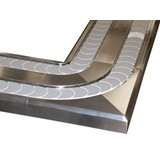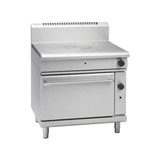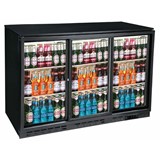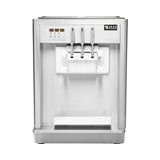Alcohol-free cocktails aren’t a trend, they’re a margin booster. This guide helps Australian bars and restaurants serve the sober-curious with premium drinks, smart marketing, and compliance tips.
Key takeaways
- Market growth: Australia's no- and low-alcohol beverage market is projected to grow at a compound annual growth rate (CAGR) of 16% between 2020 and 2024, with non-alcoholic spirits expected to exceed $150 million by 2025. (
- Sober-curious consumers: Approximately 35% of Australians aged 18–34 identify as sober-curious or are actively reducing alcohol intake.
- Feature crafted zero-proof drinks like spritzes, sours, and botanical highballs that match traditional cocktails in flavour, style, and presentation.
- Premium pricing: Non-alcoholic cocktails are typically priced at 80–90% of traditional alcoholic drinks but offer 25–35% higher profit margins.
- Venue benefits: Expanding alcohol-free offerings can lead to increased group bookings and longer dwell times, especially during lunch and wellness-focused events.
- Success factors: Critical elements include staff training, flavour balance, use of local ingredients, and stigma-free marketing.
- Regulatory compliance: Labelling and marketing rules apply to drinks with up to 0.5% alcohol by volume (ABV), requiring alignment with Food Standards Australia New Zealand (FSANZ) and state liquor laws.
Introduction: Why alcohol-free is not a trend, it’s a shift
The rise of the sober-curious movement is reshaping Australia's bar, restaurant, and events landscape. Driven by health-conscious millennials, pregnant patrons, mindful drinkers, and wellness-first groups, alcohol-free cocktails are no longer an afterthought, they’re a must-have.
What used to be a lonely lime-and-soda request has evolved into a flourishing category of botanical spirits, prebiotic tonics, zero-proof aperitifs, and expertly crafted non-alcoholic cocktails. For your venue, tapping into this market means more than just keeping up, it’s a chance to boost margins, attract new demographics, and lead on inclusivity.
Understanding the sober-curious consumer
This new market isn’t defined by abstinence, it’s defined by intentional choice.
What defines the sober-curious mindset:
- Drinking less, but not never: Occasional drinkers who seek moderation.
- Wellness-focused: Conscious of sleep, skin, productivity, and mental health.
- Experience-driven: Desire the same social inclusion and presentation as drinkers.
Stat check: 35% of Australians aged 18–34 identify as sober-curious or are actively reducing alcohol intake.
Designing a premium alcohol-free cocktail menu
Simply removing spirits isn’t enough. Alcohol-free cocktails need structure, balance, and theatre, and should feel every bit as sophisticated as traditional cocktails.
Key ingredients and techniques to use:
- Distilled botanical spirits
- Fermented or functional bases: Such as kombucha, verjuice, or drinking vinegars.
- Flavour layering: Use syrups, cordials, shrubs, and garnishes for complexity.
- Australian native botanicals: Finger lime, lemon myrtle, and Davidson plum add depth and story.
Tip: Don’t list these drinks under “mocktails”, group them as a Zero-Proof Cocktails or Mindful Mixology section on your menu for impact.
Must-have drinks for your alcohol-free cocktail menu
Creating an appealing alcohol-free menu isn’t just about taking the alcohol out—it’s about replacing the ritual, flavour complexity, and social appeal with drinks that stand on their own. Here's a curated set of non-alcoholic cocktail ideas and components that perform well in Australian venues right now.
1. Signature zero-proof spritz
Why it works: Familiar, refreshing, and visually appealing. Ideal for lunches, early evenings, and wellness-focused events.
Example build:
- Lyre’s Italian Spritz or NON #1
- Blood orange soda or verjuice spritz
- Fresh rosemary and dehydrated citrus garnish
Pair with: Light entrées, seafood, or shared plates.
2. Botanical highball
Why it works: Sophisticated, subtle, and sippable—great for long drinks that feel grown-up.
Example build:
- Brunswick Aces Hearts blend
- Yuzu soda or light tonic
- Lemon myrtle syrup or finger lime garnish
Glassware tip: Serve tall with clear ice and glass branding if available.
3. Fermented and functional sour
Why it works: Combines health cues (gut-friendly) with craft bar experience. Appealing to wellness-conscious diners.
Example build:
- Kombucha base (ginger or berry)
- Lime juice and raspberry shrub
- Aquafaba or egg white for texture (if appropriate)
- Edible flower or burnt citrus garnish
Customisation idea: Offer a rotating seasonal kombucha-based sour.
4. No-gin cucumber gimlet
Why it works: A strong seller in summer months and health-driven menus—dry, crisp and refreshing.
Example build:
- Lyre’s Dry London Spirit or Naked Life’s Classic G&T base
- Cucumber juice and lime cordial
- Dill or mint garnish
Occasion: Ideal for brunch, patio seating, or spa-style venues.
5. Prebiotic fizz
Why it works: Taps into functional beverage trends. Low sugar, gut-friendly, and very Instagrammable.
Example build:
- Apple cider vinegar-based soda (e.g. StrangeLove or Nexba)
- Dash of native honey or wattleseed syrup
- Top with sparkling mineral water
- Serve in flute or coupe
Marketing tip: Use wellness cues on menus (e.g. “energising,” “gut-friendly”).
6. Zero-proof espresso martini
Why it works: Big demand driver post-dinner. Perfect for non-drinkers who still want to join the ritual.
Example build:
- Cold brew concentrate or decaf espresso
- Non-alc coffee liqueur substitute (e.g. Lyre’s Coffee Originale)
- Vanilla and date syrup
- Aquafaba for froth
Bonus tip: Offer a decaf variant for late-night guests.
Rotation and seasonality tips
- Summer: Prioritise citrus, spritzes, and native botanicals.
- Winter: Introduce warm options like zero-proof mulled “wine” with hibiscus, clove, and orange peel.
- Events: Offer flight-style tasting paddles or pairings with canapés.
Profitability and pricing opportunities
Contrary to popular assumption, alcohol-free options can be highly profitable, especially when executed with craft and purpose.
Why it works:
- Premium pricing is accepted: Patrons are willing to pay $12–$18 for a well-presented alcohol-free drink.
- Ingredient cost is lower: No excise tax and longer shelf life for many key ingredients.
- Margins are higher: Gross profit margins can be 25–35% higher than standard cocktails.
Example: A Sydney restaurant added four signature alcohol-free cocktails in 2024 and reported a 28% increase in lunchtime revenue within three months.
Marketing to the mindful drinker
You don’t need to overhaul your brand, just communicate clearly and positively about your alcohol-free offerings.
Messaging and positioning tips:
- Normalise choice: Avoid language that makes non-drinking feel “less than.”
- Highlight ingredients: Just as you would with a good wine or spirit.
- Leverage social media: Showcase the visuals; these drinks are camera-ready.
- Feature inclusivity: Emphasise group inclusivity, wellness themes, and after-work resets.
Trend to watch: “Dry events” and wellness-focused pop-ups are rising, especially in metro areas like Melbourne and Brisbane.
Staff training and service experience
Crafting the drink is just part of the equation, service, language, and confidence are just as important.
What staff should know:
- How to upsell alcohol-free options confidently.
- Ingredient stories: Especially for local or functional elements.
- Serving standards: With appropriate glassware, garnish, and presentation.
Training idea: Partner with brands to host in-house tastings and workshops for your team.
Regulatory and compliance notes
Even alcohol-free beverages may require compliance with labelling, marketing, and safety standards under Australian law.
What to stay on top of:
- FSANZ guidelines: Ensure accurate labelling, especially if a drink contains up to 0.5% ABV.
- Liquor Act compliance: Each state has different rules on what can be sold and how it's advertised.
- Advertising rules: Claims about health benefits must be evidence-based and not misleading.
Watchpoint: If your alcohol-free spirits are fermented or brewed, even trace alcohol may bring them under liquor licence requirements depending on your state.
Cost breakdown and ROI of alcohol-free programs
If you're considering launching or expanding your alcohol-free offering, it’s important to understand the setup costs, and how quickly you can expect returns. The good news: it’s often a low-cost, high-margin initiative with faster ROI than many kitchen upgrades or traditional bar expansions.
Typical cost ranges:
- Initial inventory: $1,500–$3,500 for a starter selection of non-alcoholic spirits, mixers, and garnish ingredients.
- Glassware and presentation: $300–$700 for appropriate stemware, coupe glasses, and highball alternatives.
- Staff training: $0–$1,000 depending on whether you upskill internally or bring in brand partners.
- Menu design and marketing: $200–$1,000 for printing, social media visuals, and digital menu updates.
Expected returns:
- Margin lift: Most alcohol-free cocktails offer 25–35% higher gross margins than their alcoholic equivalents, due to lower ingredient and tax costs.
- Faster payback: ROI can be achieved in as little as 2–4 months, especially if drinks are marketed as premium alternatives.
- No licence costs: Drinks with 0.5% ABV or less don’t require a liquor licence in most Australian states, reducing operational overheads.
Example: A Melbourne bistro introduced three zero-proof cocktails in late 2024 and reported a 16% increase in average spend at lunch, driven by non-drinkers who previously skipped beverages altogether.
Event opportunities and use cases
Zero-proof doesn’t just fit into your standard menu, it opens up entirely new event formats and revenue streams. With wellness culture growing and alcohol moderation becoming mainstream, venues that lean into the sober-social movement can tap into high-value, low-competition bookings.
Emerging opportunities:
- Dry corporate functions: Mindful consumption is now a standard for some companies. Offering crafted alcohol-free drinks lets you pitch for weekday bookings, team events, and leadership retreats.
- Prenatal celebrations: Baby showers and gender reveals increasingly expected inclusive drink menus, especially for hosts and guests avoiding alcohol.
- Wellness nights and brand collaborations: Yoga + mocktail events, zero-alcohol wine tastings, and workshops with brands
Audience segmentation: Which customers to target and how
Understanding who your alcohol-free cocktails are for helps you design menus that convert. Here are four key Australian segments—and how to engage them effectively:
1. Health-conscious millennials & Gen Z (25–40)
- Motivators: Wellness, social inclusion, mindful consumption
- How to attract:
- Highlight functional ingredients (e.g. adaptogens, kombucha)
- Use visual cues like wellness icons and clean menu design
- Promote on Instagram and TikTok with premium presentation
2. Designated drivers & pregnant patrons
- Motivators: Social belonging, safety, equal treatment
- How to attract:
- Use “Zero-Proof” or “Mindful Mixology” labels instead of “mocktail”
- Serve with care—premium glassware, garnishes, and presentation
- Ensure staff upsell alcohol-free options confidently and without stigma
3. Corporate & wellness event clients
- Motivators: Focus, professionalism, conscious branding
- How to attract:
- Offer dry function packages and brand-customised menus
- Highlight inclusivity and productivity in event proposals
- Leverage testimonials from previous events
4. Casual drinkers reducing alcohol
- Motivators: Curiosity, pacing, flavour exploration
- How to attract:
- Feature one or two signature zero-proof drinks prominently
- Bundle with snacks or tasting flights
- Promote during happy hour or as a “low & no” feature of the week
Final thoughts: Zero-proof doesn’t mean zero opportunity
The sober-curious movement in Australia is no longer a niche—it’s a growing consumer base reshaping hospitality norms. Whether you operate a local bar in Perth, a health-forward café in Byron, or a fine-dining venue in Melbourne, a thoughtful alcohol-free drinks program can:
- Increase revenue per table
- Attract new demographics and group bookings
- Differentiate your venue in a competitive market
- Enhance your brand’s commitment to wellness and inclusivity
Alcohol-free doesn’t have to mean less—it can mean more: more customers, more margin, and more opportunities to lead.




-160x160-state_article-rel-cat.png)
-160x160-state_article-rel-cat.png)

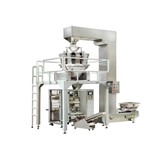
-160x160-state_article-rel-cat.png)





